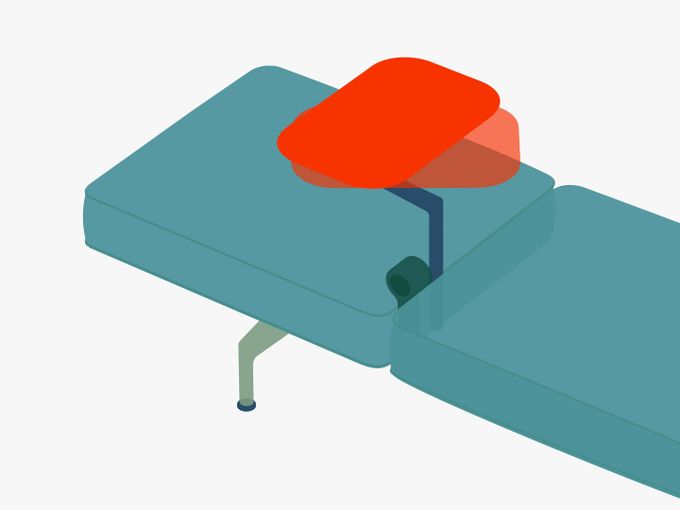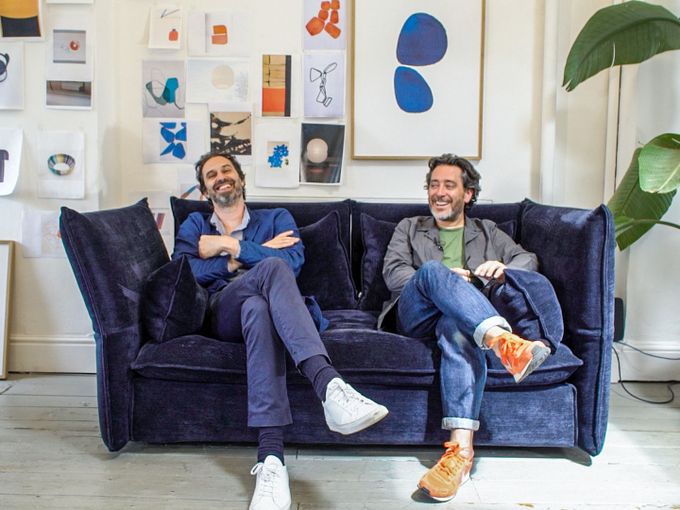The Individual Desk Is a Dying Breed
Interview with Raphael Gielgen

Everyone talks about the workplace of the future, but few have as much to say on the topic as Raphael Gielgen. Our trend scout for the future of work travels the globe and visits around 100 offices and companies each year. Dearwork had the opportunity to speak with him on the Campus.
Raphael, you describe yourself as a satellite, buzzing around and bombarding colleagues with information. On the basis of this information, they design the workplace of the future. What does it look like?
There won’t be just a single kind of workplace in the future. There will still be two-person offices with potted plants and a calendar on the wall, as well as virtual offices. This means that we can adapt to the entire bandwidth of options. And people will be able to choose from this broad range. At Vitra, however, we assume that individual desks, as we currently employ them, are a dying breed.Why is that?
Because no new values are created at the individual desk. In the future, the relevance of a company will be decided on a collective basis. There is also no longer one solitary genius. Perhaps here and there, sporadically. But even the geniuses I have come across only gain significance through the collective, through the linking of their knowledge and expertise with others.“If you build a business based on the rebels alone, the whole thing will fall apart.”
What does that mean for the desk?
This means that neither the desk nor the desk chair will furnish the workplace of the future. The collective areas will set the pace. On the one hand, there are the so-called transit zones such as lobbies, passageways or kitchen areas. Such places foster random and spontaneous encounters that give us a special energy and a sense of community. On the other hand, there are collective work areas such as the creative workshop which provides space for creative processes . That’s where you go to work on a certain issue or problem. People share their knowledge and something new emerges.
Does that mean that conventional office types as we know them will disappear entirely?
Nothing will vanish from one day to the next. We recently extracted the last hard coal from the Prosper-Haniel mine in Germany’s Ruhr Valley. How long did we wait for the end to come? Twenty years! It’s the same with work. On one hand, you have people working in the International Space Station, while others sit next to a rubber tree plant and perform the same tasks day in, day out. That’s the spectrum, and the two poles will drift even further apart.“Computer work is usually invisible. Every company can think about architecture differently, trying to make work visible and creating a space for community.”
You say that’s exactly the kind of tension which is needed within a company. It takes progressives and preservationists. Why is that?
If you build a business based on the rebels alone, the whole thing will fall apart. The preservationist elements and the rebel tendencies both have their strengths. The preservationist side provides orientation, stability, safety, steadiness. The rebellious side brings innovation, curiosity, the courage to pursue different paths. Ideally, you should have a combination of both.You say: ‘Every company can think about architecture differently, trying to make work visible and creating a space for community.’ What does that mean, how does it work, and why is that important?
Computer work is usually invisible. You can’t learn anything from an office colleague who’s communicating exclusively with their machine. The full-service digital agency R/GA in New York, for example, has recognised this and rendered work visible in its new headquarters: In the staff restaurant, 32 large-format laser projection screens hang from the ceiling where employees are able to present their work. What was just done for Chrysler or Nike? Who is working on which job? Suddenly you participate in other people’s projects, feel a sense of belonging, and the work of the different teams becomes visible.And a further question: How do you create a place of community?
Same example: At R/GA, an entrance that is not particularly large is shared by some 1000 employees. The company therefore automatically achieves a node of physical proximity and interaction. There is one ‘opening’ and everyone has to go in and out. The chance of meeting there is relatively high.“If a company has defined its cultural framework, you can tell when you enter the building, speak to the management or observe how employees interact.”
You speak of a company’s cultural framework. What do you mean by that?
Every company has a cultural framework, which is unique and consists of multiple layers. If a company has defined its cultural framework, you can tell when you enter the building, speak to the management or observe how employees interact. Corporate culture, on the other hand, is often reduced to simple values, such as trust or loyalty, which are disassociated from one another. The cultural framework is much more expansive. It functions as a guideline for corporate architecture. Everything is intertwined.Do you have examples for us?
Anyone entering the Adidas Campus near Herzogenaurach is immediately immersed in an ambience of sport, performance, community. There are meeting areas that give the impression of sitting in an ice hockey referee’s cubicle or in the workout room of a football team. Or PriceWaterhouseCoopers – they now use their Experience Centres worldwide, offering a new architectural take on open-plan offices, which can be flexibly redesigned with mobile wall panels and furniture for collaborative requirements. Or Amazon in Seattle: In January, Jeff Bezos opened three giant spheres in the centre of the city. Bezos realised something years ago, unlike most of us – that people would once again develop strong ties to nature. His employees now benefit from this. The spheres have proved very popular since the day they first opened. People leave their office on the 29th floor of the Amazon building to quickly pop down over the road to have a coffee in the sphere.
You say that German architecture has long been an architecture of control. How does architecture exert control?
It begins with where you sit. On which floor. How large is the space? Anyone in the automotive industry, whose desk is in the company’s headquarters, often automatically has the feeling of having something to say, regardless of whether it is actually the case. Anyone who can observe everything from their workstation, and can see if someone sneaks out, also has a certain element of control. And when the room in which you try and think is 16 square metres in size, the space controls you as your thoughts are contained within its walls.Is it really that desirable to work in marvellous, uniquely designed spaces? If a space responds to all my possible needs, am I perhaps prepared to neglect what I really want. In short, are nice interiors responsible for overtime and overwork?
A nice office isn’t responsible for making people work longer! It’s more a matter of social pressure. The alternative would be to work half as long but in ugly surroundings. You can have wonderful offices but if there is no corporate welfare, then it is all worthless. Regard for the individual should be at the top of the list of priorities; no-one should feel like just an expendable resource.This interview was first published on dearwork.de – the online magazine that follows the changing world of work through the personal stories of its protagonists, interviews with experts and events.
Publication date: 20.2.2020
Author: Franziska Klün & Anna Volquardsen / DEARWORK
Images: DEARWORK


